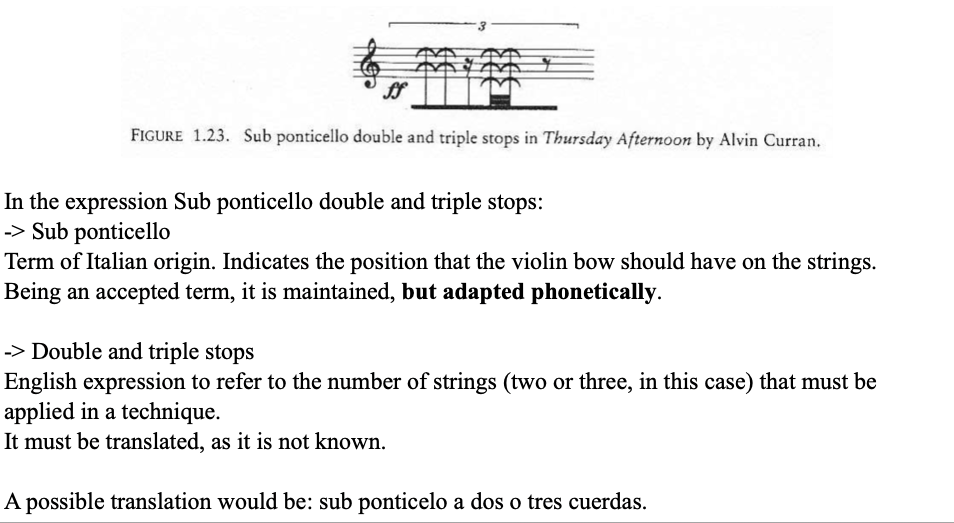One of the greatest difficulties when translating texts from the musical field lies in the terms of extended techniques, that is, of the new ways of generating sounds with a musical instrument developed since the 20th century. This difficulty stems from the fact that, from this point on, there is no consensus on the name given to these techniques, rather composers or experts have been developing their own definitions and labels for the techniques.
There do not seem to be any specialized translation studies in contemporary academic music terminology. This can generate doubts when facing an assignment of this nature, about the best sources for documentation and preparation. Here are some suggestions to fill this gap.
Orientation through the mixture of languages
As we all know, any language has loanwords from foreign languages, as a result of continuous cultural or historical exchanges over the centuries. In the same way, in the world of musical training, different musical schools have always competed with different perceptions about the functioning and teaching of music and, therefore, impregnating musical terminology with their words depending on which musical school was in question. boom of the time. Therefore we should not be surprised if, when we come across a musical text, many of the musical terms are, for example, Italian or French.
What is most interesting in view of the need to translate a musical text is the fact that, as a general rule, it is these French or Italian terms that do not require translation, but must remain the same. These are accepted terms in the community. On the contrary, expressions or indications in the language of the text, especially if they are English or Spanish texts, must be translated, as they are not transparent or universally known terms.
Here are some examples, taken by Allan and Patricia Strange in their manual The contemporary violin – Extended performance techniques (11-13):


Use expert monographs
To understand the meaning of extended techniques, a list of recommended resources for documentation is attached here. These are manuals for expert interpreters of each instrument:
On the one hand, a list of different manuals of extended techniques of the instruments in which the Spanish, English or German terminology on said instruments can be extracted:
- Weiss, Marcus; Netti, Giorgio. (2010) The Techniques of Saxophone Playing. Die Spieltechnik des Saxophons. (Ciudad): Bärenreiter Kassel.
- Strange, Allen & Patricia. (2001). The contemporary violin. Extended Performance Tecniques. California: University of California Press.
- Antequera Antequera, María Carmen. (2015) Catalogación sistemática y análisis de las técnicas extendidas en el violín en los últimos treinta años del ámbito musical español. Rioja: Universidad de la Rioja.
- Cherry K., Amy. (2009) Extended trumpet. Cincinnati: University of Cincinnati.
And, finally, at a purely theoretical level, this monograph compiles the symbology of the different contemporary works:
Locatelli, Maria, A. (1972) The notation of contemporary music.
In case you feel still somehow lost and are unnable to find, please consider visiting the Website of SATMUS. SATMUS dedicates itself to distribute music theory information and offers free acces to numerous doctoral thesis and articles written both in spanish and in english. Therefore, it offers a valuable resource for documentation porpuses and greater understanding of the terminology used in this kind of texts.
You can also find my own analysis and their translations on my web.